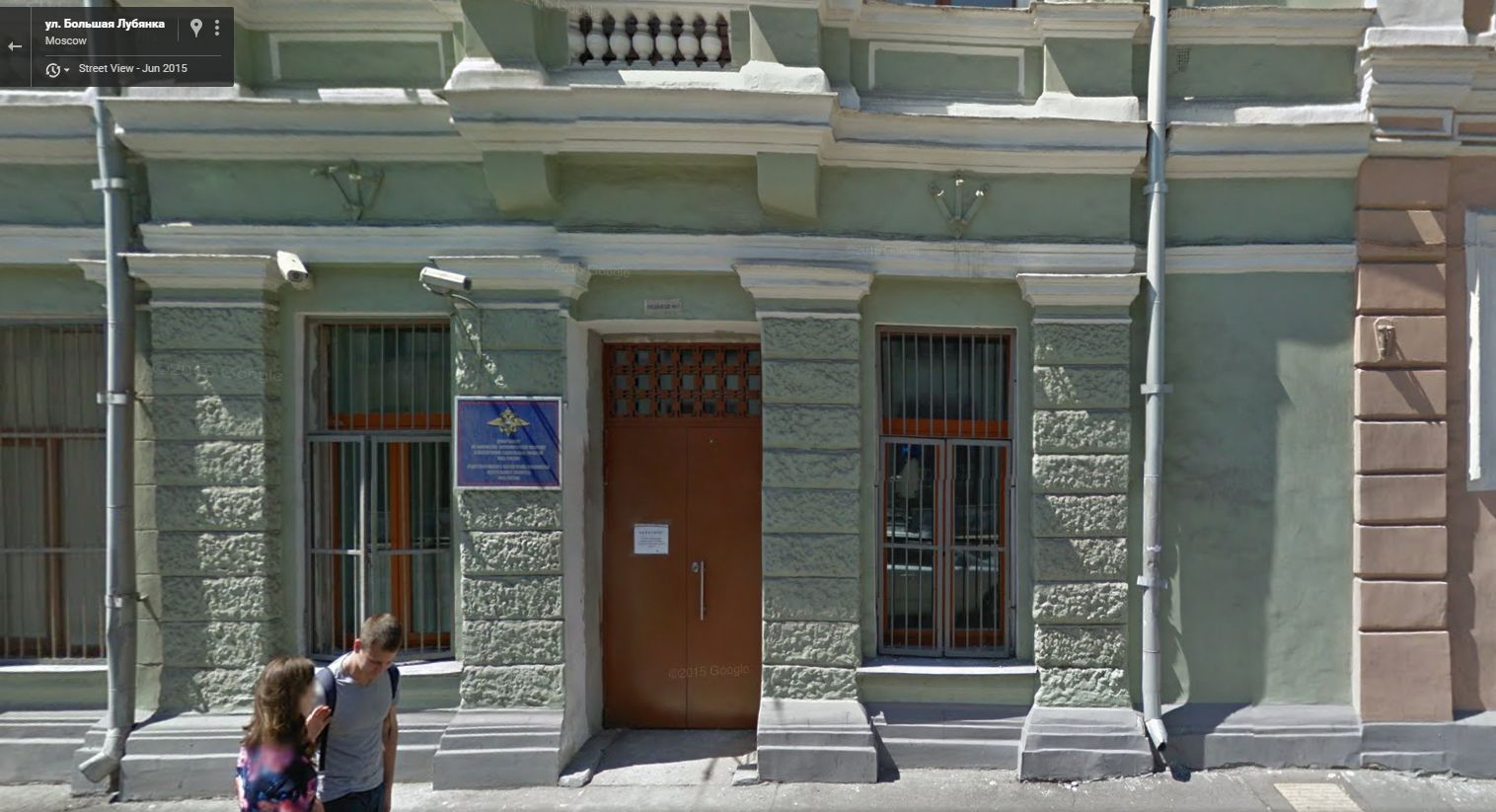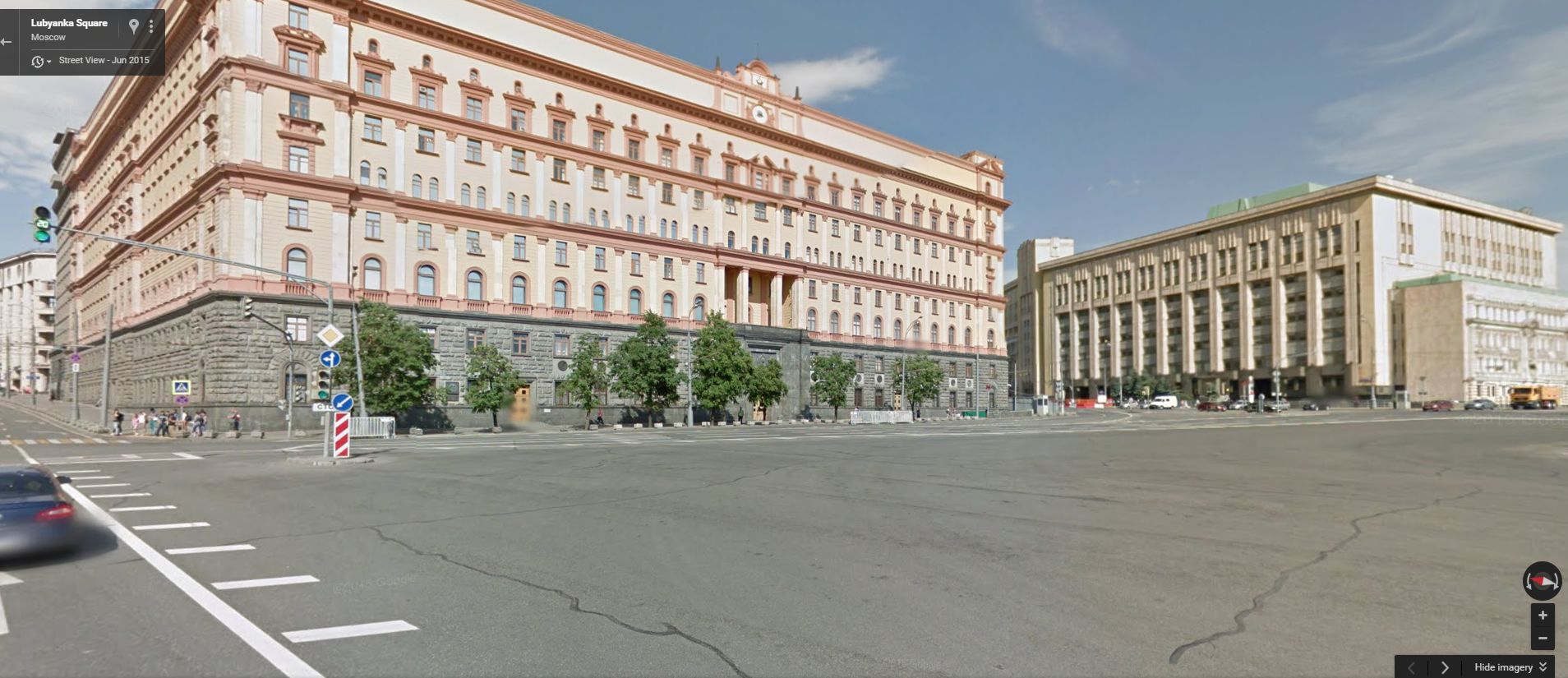LIVE UPDATES: Russia sold $14.5 billion in armaments last year, many to the world’s conflict zones and has a record $56 billion in arms orders for 2016 after showcasing its weapons in the Syrian war.
Welcome to our column, Russia Update, where we will be closely following day-to-day developments in Russia, including the Russian government’s foreign and domestic policies.
The previous issue is here.
Recent Analysis and Translations:
– Getting The News From Chechnya – The Crackdown On Free Press You May Have Missed
– Aurangzeb, Putin, Realism and a Lesson from History
– Why the World Should Care About the Assassination of Boris Nemtsov
– How Boris Nemtsov Was Murdered: Investigation by Novaya Gazeta
– How Stalin Returned to Russian Contemporary Life – Meduza
UPDATES BELOW
Pavlensky, an art activist in the aktionist tradition, was arrested for setting fire to the doors of the Federal Security Service (FSB) on Lubyanka Square last November 9.
Building of the All-Russian Extreme Commission for Battle with Counterrevolution and Sabotage [the Cheka] in Which in 1919, V.I. Lenin Repeatedly Visited F.E. Dzerzhinsky
But that building at No. 11 here on Google maps is not the same building that Pavlensky set fire to.
For the first time since the end of the Cold War, the Pentagon is planning on a large deployment of forces to the NATO border with Russia in order to deter Russian aggression. The deployment will start in February 2017.
Wall Street journal reports:
Deputy Secretary of Defense Robert Work said the new plan should allay such worries because it would position more of the U.S. Army’s best and most-modern equipment in the area, while rotating in a brigade’s worth of U.S. Army troops.
The new gear includes 250 tanks, Bradley Fighting Vehicles and Paladin self-propelled howitzers as well as more than 1,700 additional wheeled vehicles and trucks.
Combined with equipment already in Europe, “there will be a division’s worth of stuff to fight if something happens,” Mr. Work told The Wall Street Journal. “If push came to shove, they’d be able to come together as a cohesive unit that has trained together, with all their organic equipment, and fight. That’s a lot better than what we have right now.”

Pentagon Readies More Robust U.S. Military Presence in Eastern Europe
The Pentagon has drawn up plans to position American troops, tanks and other armored vehicles full time along NATO's eastern borders to deter Russian aggression, in what would be the first such deployment since the end of the Cold War.
Many analysts believe such a deployment is not only necessary, but overdue. Since Russia’s illegal annexation of the Crimean peninsula in 2014, Russian aircraft, naval vessels, and even agents have not only threatened NATO borders but crossed them.
In a new comprehensive report I look at the history of global stability since World War II, and I argue that institutions like NATO that have prevented widescale war since 1945 are weakener than they have ever been and — worse — if that threat is not addressed, global security could indeed break down. One reason for this — the lack of NATO presence in Eastern Europe and the lack of support for the members of the NATO alliance that are in the most precarious positions:
An assessment by the Rand think tank suggests that if Russia were to involve the Baltic states (Estonia, Latvia, Lithuania) there are not enough NATO troops to stop it from reaching the capitals of those countries. NATO would lose the war within 36 hours. This follows NATO’s own internal assessments in 2014 and 2015 that a much greater NATO presence is required in the Baltics and in Poland, and the defense spending of NATO allies besides the US needs to be increased. Putin, for his part,appears to believe this as well, if Ukrainian President Petro Poroshenko is to be believed. This threat has not gone away, either. As a reader points out, last month Polish Foreign Minister Witold Waszczykowski urged his NATO colleagues to build up a military presence in Eastern Europe since Russia has violated a key treaty – the Founding Act on Mutual Relations, Cooperation and Security – which was designed to avoid the militarization of the border between NATO and Russia. Waszczykowski argued that the treaty discriminates against the easternmost NATO allies that are most in danger, something which Russia is already exploiting.
Imagine this scenario: Russia, claiming it is protecting ethnic Russians, or perhaps its own security interests, invades part or all of any of the four countries mentioned here. Without enough troops, armor, or airplanes to stop the invasion, Russia could conquer this territory with ease. Having then lost a significant amount of ground to the Russian military, NATO would then be forced to make a difficult choice – on one hand it could honor its NATO obligations and engage in all out war, which could spark a nuclear war, in order to regain lightly populated, distant, and strategically unimportant territory in Eastern Europe. On the other it could do nothing, effectively signalling that the NATO alliance is meaningless and imperial powers are free to invade wherever they want. In this scenario, the thing that has helped secure geopolitical stability for two generations will become an albatross around our necks, and the words “why would we go to war for Ukraine” will ring through the history books as a tremendous folly.
“I will note that against the backdrop of a complicated international situation and economic challenges, domestic arms producers have really maintained their brand. The defense and industrial complex plants turn out quality production which is a worthy competitor in international markets. The capacity of our vehicles and armaments was demonstrated in a combat setting in the course of the battle with the terrorist threat.”
According to a Kommersant source, more attention will be devoted to Algeria this year as it is prepared to purchase Su-32 bombers and the Antei-2500 anti-aircraft system. Algeria already bought $800 million in arms, including six Mi-26T2 helicopters, Pantsir-S1s, T-90SA tanks and also modernized its BMP-2Ms.
Algeria waged a war of liberation from France from 1954 to 1962 and a fierce civil war with the Islamic Salvation Front (FIS) from 1991-1997 where the highest number of journalists in the world were killed (70). It continues to wage war against Al Qaeda in the Islamic Maghreb (AQIM).
Russia will also be filling contracts with Egypt and China.
This year, China only bought a batch of Ka-32 helicopters and airplane motors.
But Egypt signed a major $5 billion contract with Russia including MiG-29ms, the anti-aircraft systems Buk-M2E and Antei-2500 and also 46 Ka-52 helicopters which are to be delivered this year. Field Marshal Abdel Fattah el-Sisi came to power in 2014 following massive democracy protests after the military crushed the elected Islamist President Mohamed Mursi and subsequently cracked down on both Islamists and liberals with hundreds killed and thousands jailed.
The former Soviet republics continue to rely on Russia also but sales are sometimes sluggish. Kazakhstan bought 4 Su-30SM fighters which a source called “great success” even if a “small” order of about $500 million — “because it’s real money, and not free deliveries.”
Azerbaijan which remains in conflict with Armenia over Nagorno-Karabkh bought T-90S tanks and BMP-3s as well as Mi-17B-1 helicopters and also signed a contract for 18 TOS-1As (for at least $600 million). Belarus bought 4 Yak-130 training airplanes, although Russia continues to deliver free vehicles to its vital ally on the border of the EU (4 S-300PS anti-aircraft missile systems). Kazakhstan, bordering China got 5 S-300PS and Kyrgyzstan 10 BRT-70m armored personnel transporters.
Saudi Arabia spent more than $80 billion on weapons in 2014, which is why Russia is cultivating it.
— Catherine A. Fitzpatrick
The rate of the ruble to the dollar today is 67.35; to the euro 76.32; Brent crude is $39.65.
The following headlines are from 7:40 na Perrone; Svoboda, Kommersant, Gazeta, Moscow Times, RBC
– New Leadership’s Plan to Rescue Vneshekonombank
– Ukrainian Prosecutor Publishes Video of Murdered Lawyer Grabovsky Stating He Dropped Aleksandrov’s Case
Catherine A. Fitzpatrick


